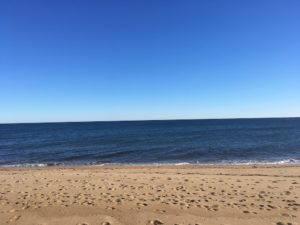One Person’s Art?
Recently in my various social-media feeds, I’ve been seeing celebrations of the 30th anniversary of that seminal piece of cinematic art, Bill and Ted’s Excellent Adventure.
Really. Did you really think, back in 1989, that 30 years later we’d even REMEMBER that movie? Of course not. Yikes.
Funny you should mention that…
Thanks to the vagaries of the Dartmouth Plan — whereby students have to spend the summer after their sophomore year in school, meaning that a more traditional fall-winter-spring term would be open during their sophomore or junior years — I spent January to March of 1987 living and working in Los Angeles. My mother got me a job in the mail room of the now-defunct De Laurentiis Entertainment Group production company (and an awesome set-up living over the garage of a producer friend of hers who lived right on Sunset Boulevard…it was cush) and I spent every morning surfing in the Topanga area before driving to work for the day. It was a great way to spend the winter and I had a blast.
The job mostly entailed sending out one-sheets (aka: posters) and other advertising materials for the various films DEG had going at the time, coming up or in the recent past. And at at the time, DEG was in mixed territory. They’d had some hits — Blue Velvet, Crimes of the Heart — but they’d had a lot of misses — films starring people like Dirk Benedict, Steve Guttenberg and Shadoe Stevens (really). What was especially hilarious to me was that so many of the movies they were making at the time were obvious ripoffs (sorry…homages). They made The Bedroom Window which was an obvious stab at Hitchcock’s Rear Window, and Million Dollar Mystery was a bald-faced ripoff of It’s A Mad, Mad, Mad, Mad World (oh, but with the tie-in that a moviegoer could win the money). Yawn. And they wondered why there was still concern about the viability of the company…
But in the winter of 1987, everyone at DEG was excited about their upcoming film, the one that was going to cement the company as a force in Hollywood. It was called From The Hip and it starred — trumpet blast! — Judd Nelson. Yes, THAT Judd Nelson: the card-carrying Brat Pack member known mostly as Bender from The Breakfast Club. And that winter we all, even us lowly mail room folks (really just two of us: me and a guy named Brent, as I recall) got to attend the big premiere. When we emerged from that momentous event, everyone from the company stood around gushing about how great the movie was and how much they enjoyed it.
Me, I thought the film sucked from soup to nuts: the story, the acting, the directing, the sets…everything. It was awful. Just God awful. Opting for discretion (and to keep my job), I kept my mouth shut — though I did tell my mail room coworker the next day what I thought.
What’s funny about it — and here’s where we finally come full circle back to that magnum opus that set Keanu Reeves onto his path of success — is that at the same time all the muckety-mucks upstairs at DEG were so excited about From The Hip, they were also pooh-poohing another film that was coming up. That film? Evil Dead II.
That’s right: One of the biggest cult films of all time and a film that launched a thousand copy cats, and all the execs at DEG were tripping over themselves to show that thing as much disdain as possible. I don’t like horror flicks, but it was a movie that anyone who didn’t live in the bubble of a Hollywood executive office could tell you was going to make money and be a success. No, I didn’t think it was going to become such a cult classic, but I knew it was going to be better than that piece of crap into which they’d put all their eggs. Meanwhile, the flick those schmucks thought was going to make their careers? Twenty-two percent on Rotten Tomatoes and a Worst Actor Razzie nomination for Nelson. And that is why DEG is no more.
But Evil Dead II wasn’t the only upcoming DEG film those DEG execs mocked. Another one they couldn’t be bothered with? You guessed it: Bill and Ted’s Excellent Adventure.
So here I am in 2109, seeing posts (okay, let’s be honest: they’re ads) for the next installment (30 years later) of a movie that was incubating at the Hollywood company I spent a winter working for in the mail room. And all I can think of is: I wonder what happened to Judd Nelson…and all those execs who should have known better?





